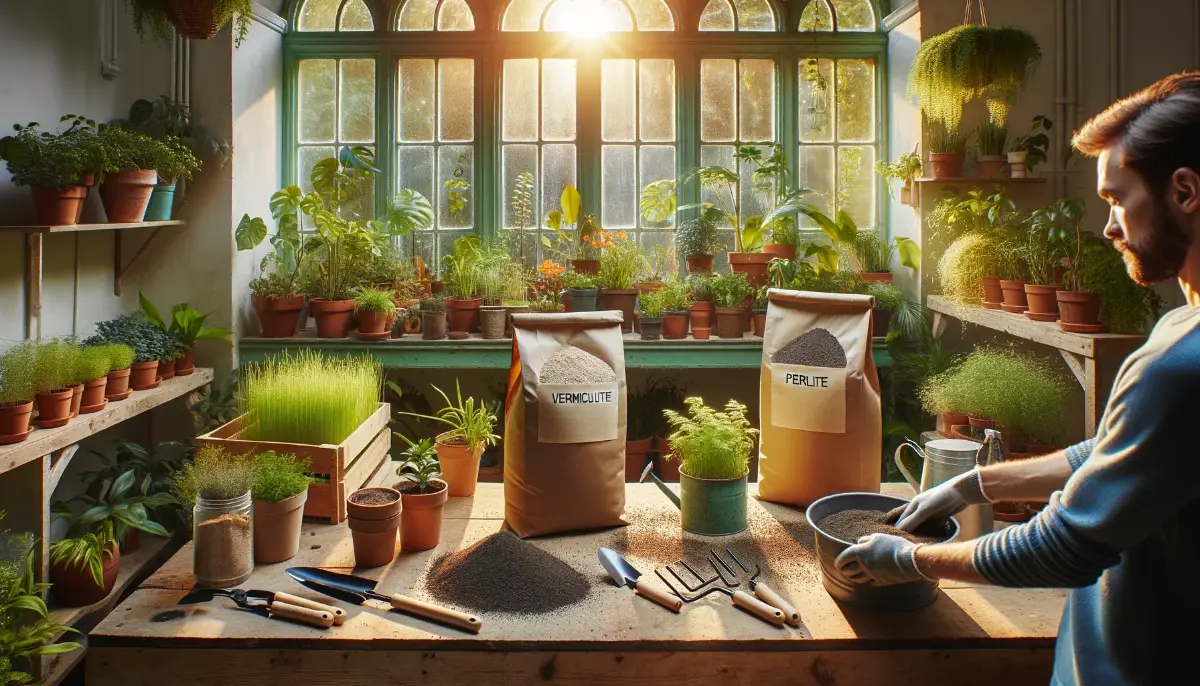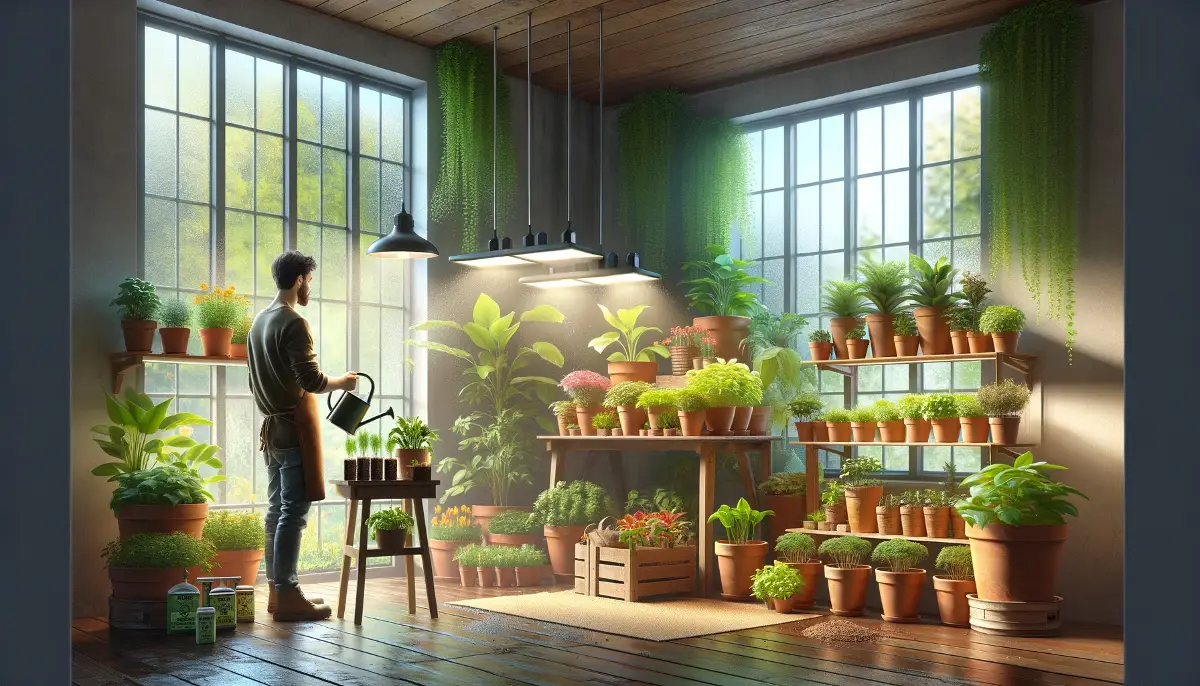In the pursuit of a thriving indoor organic garden, understanding the roles of vermiculite and perlite becomes crucial. These two soil amendments can significantly impact plant health, affecting moisture levels, aeration, and root development. This article delves into the characteristics, benefits, and practical applications of vermiculite and perlite, offering insights for gardeners aiming to optimize their indoor gardening practices.
- Vermiculite and perlite enhance soil structure, each serving unique purposes in the garden.
- Vermiculite is excellent for moisture retention, suitable for plants needing consistently moist soil.
- Perlite improves drainage and aeration, ideal for plants that prefer drier conditions.
- Combining both materials can create a balanced growing medium for diverse plant needs.
What is Vermiculite and How to use it
Vermiculite, a natural mineral, expands upon heating, resulting in a lightweight, absorbent material. Its high water retention capability makes it ideal for seed starting and for plants requiring constant moisture. By aerating the soil and improving nutrient retention, vermiculite supports healthier plant growth and root development.
Best Uses of Vermiculite in Indoor Organic Gardening
- Seed starting: Vermiculite’s water-holding properties ensure seeds remain moist, aiding germination.
- Moisture retention: Ideal for plants that thrive in consistently moist environments.
What is Perlite: Guidelines on Using it
Perlite is derived from volcanic glass, expanded through heating to create a porous, lightweight material. Its primary benefit lies in enhancing soil drainage and preventing compaction. This makes perlite suitable for plants that require well-drained soil, promoting root health and preventing waterlogging.
Guidelines on Using Perlite
- Enhancing drainage: Mix perlite into potting soil to prevent water retention and protect against root rot.
- Supporting root growth: The airy nature of perlite encourages healthy root development.
Combining Vermiculite and Perlite
For gardeners looking to achieve a balanced soil medium, mixing vermiculite and perlite with coco coir can offer the best of both worlds. This combination provides excellent moisture retention, drainage, and nutrient retention, catering to a wide range of plant needs.
Incorporating these materials into your gardening practice requires understanding their specific benefits and applications. Whether you’re working with hydroponics or traditional potting mixes, knowing when and how to use vermiculite and perlite can make all the difference.
Embracing the use of vermiculite and perlite in your indoor garden can lead to healthier plants and more successful gardening outcomes. By understanding and applying these materials effectively, you can create an optimal growing environment tailored to your plants’ needs. Experiment with different mixes and observe your plants’ responses to find the perfect balance for your garden.
FAQs on vermiculite and perlite
Can I use vermiculite and perlite in organic gardening?
Yes, both are considered safe for organic gardening due to their natural composition and processing.
How do I decide between vermiculite and perlite for my garden?
Choose perlite for better drainage and aeration, and vermiculite for moisture retention, based on your plant’s needs.
Are there any plants that shouldn’t be grown with vermiculite or perlite?
Yes, plants requiring dry conditions may not benefit from vermiculite, while those sensitive to overwatering might not be ideal for perlite.
Can I mix vermiculite and perlite together?
Absolutely. Mixing vermiculite and perlite combines the benefits of moisture retention and improved drainage, offering a versatile growing medium for a wide range of plants. This mixture is particularly useful for indoor gardens where controlling soil conditions is crucial.
Is there a risk of overwatering with vermiculite?
Yes, due to its high water retention capacity, vermiculite can lead to overwatering if not used judiciously. It’s best used for plants that require consistently moist soil and should be avoided for plants that prefer drier conditions.
How often should I add perlite or vermiculite to my soil?
The addition of perlite or vermiculite to your soil doesn’t need to be a frequent activity. Once mixed into your potting soil, it should last for the life of the potting mix. However, you may need to refresh the mix if you repot your plants or if the soil structure appears to deteriorate over time.
Can vermiculite or perlite become moldy or harbor pests?
Perlite is sterile and inert, reducing the risk of disease or pest infestation. Vermiculite, while also having low risk, should be stored properly to avoid any chance of mold growth due to its moisture retention properties. Both are generally safe and do not significantly attract pests or mold.
Do vermiculite and perlite affect the pH of my soil?
Perlite is pH neutral and does not affect the soil’s acidity or alkalinity. Vermiculite has a slightly alkaline pH but usually does not significantly alter soil pH to affect most plants negatively. Always monitor your soil’s pH level to ensure it matches the preferences of your specific plants.
Can I use perlite or vermiculite for all types of plants?
While perlite and vermiculite can benefit many plants, they are not suitable for all. Perlite is excellent for plants that require well-draining soil, such as succulents, while vermiculite is best for plants that thrive in moist environments.
Research your plants’ specific needs to decide which material, if either, is appropriate.
How does using vermiculite or perlite impact water usage in my indoor garden?
Using vermiculite can reduce the frequency of watering needed due to its moisture retention qualities. Conversely, perlite increases drainage, which may require more frequent watering for some plants. Balancing these materials in your soil mix can help manage water usage effectively.








